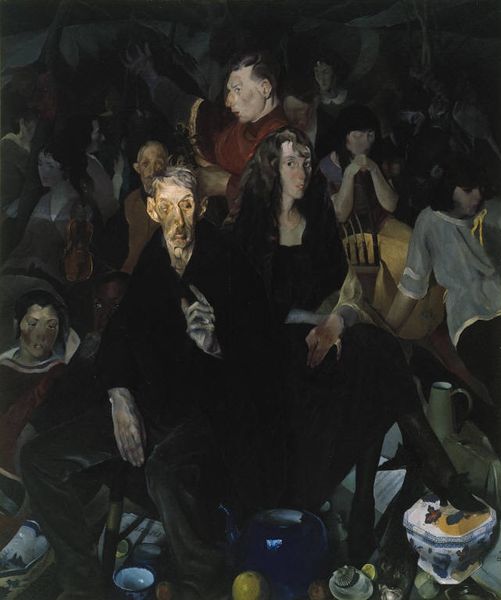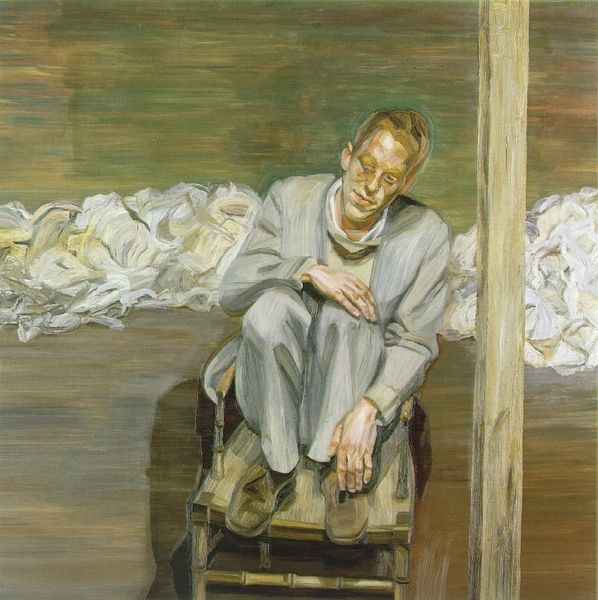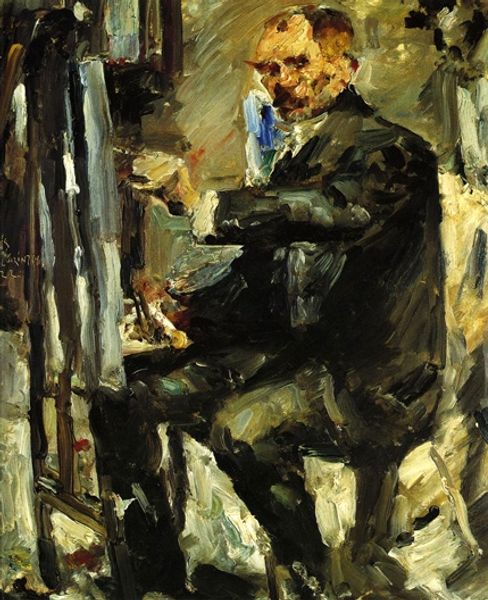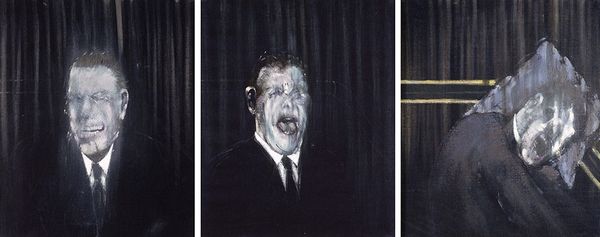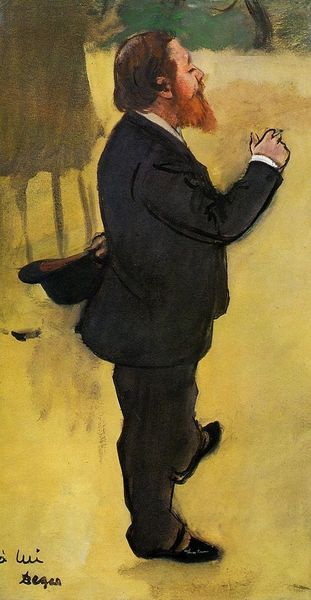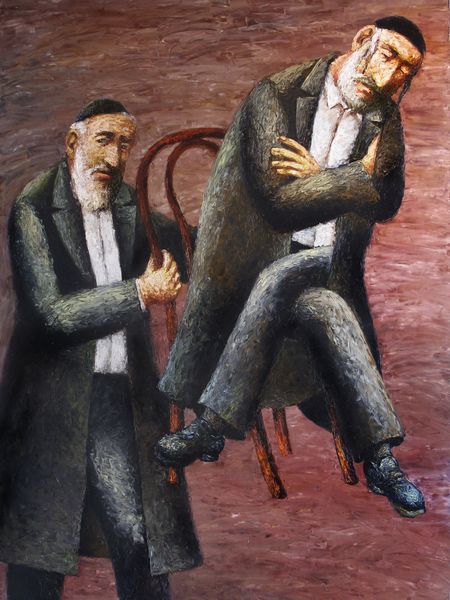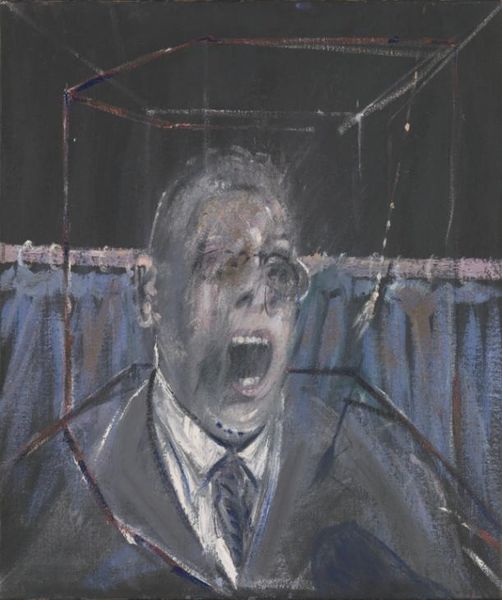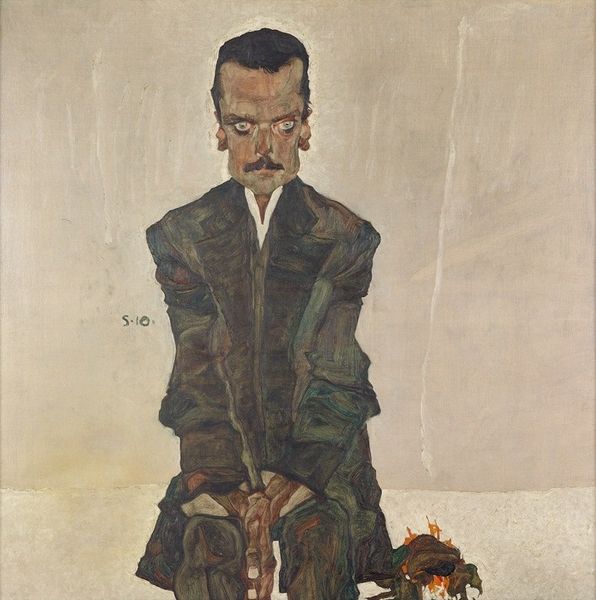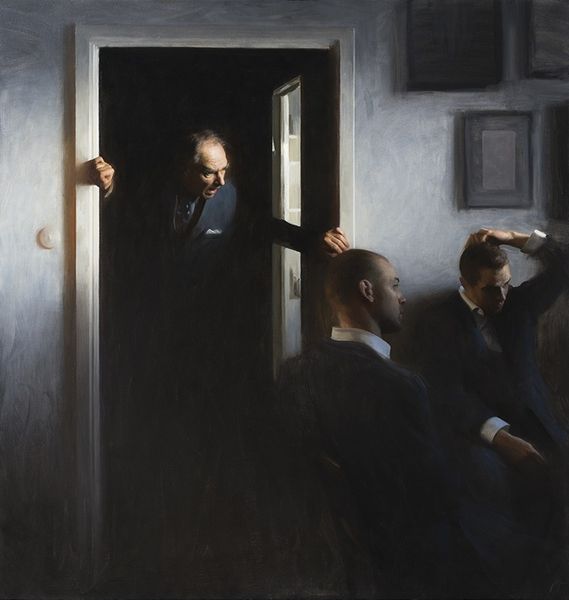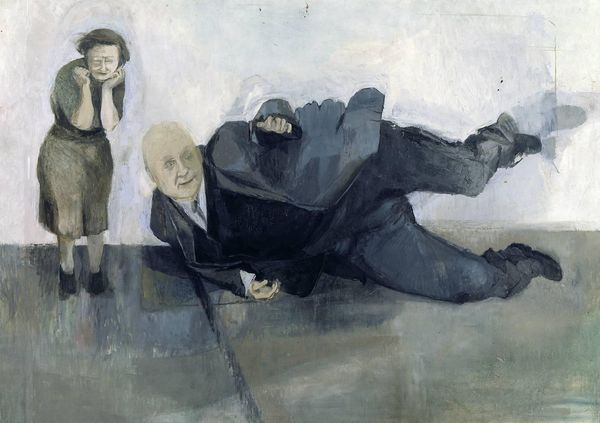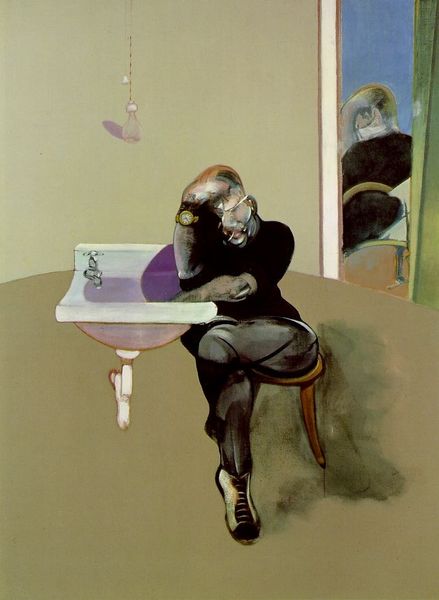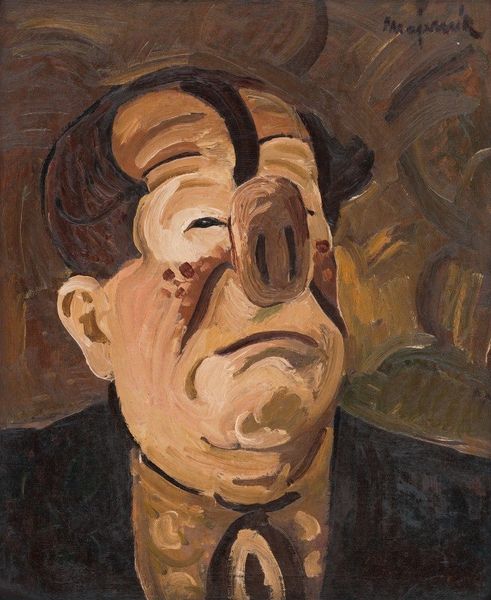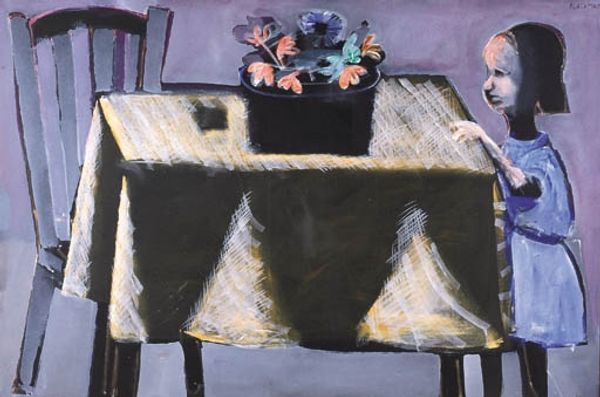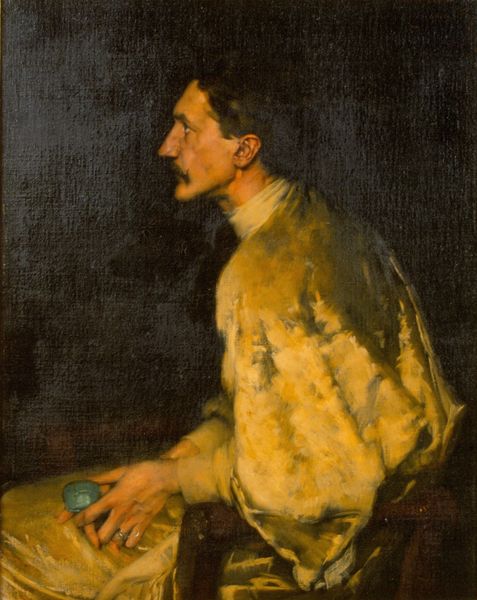
Reflection with Two Children (Self-Portrait) 1965
0:00
0:00
lucianfreud
Thyssen-Bornemisza Museum, Madrid, Spain
painting, oil-paint
#
portrait
#
self-portrait
#
painting
#
oil-paint
#
school-of-london
#
figuration
#
oil painting
#
group-portraits
#
modernism
#
realism
Dimensions: 91.5 x 91.5 cm
Copyright: Lucian Freud,Fair Use
Editor: This is Lucian Freud’s "Reflection with Two Children (Self-Portrait)," painted in 1965 using oil paint. I'm struck by how raw and unflattering the figures are rendered. What do you see in this piece beyond just the depiction of the figures? Curator: I’m interested in the materiality itself. Look at the thick application of paint, almost sculptural. Notice how Freud builds up layers, revealing and concealing, creating a tangible sense of the passage of time and labor. Think about what he's *doing* with the oil paint. Does the somewhat muted palette connect it to something from the era of its creation? Editor: It feels very intentional, as though he wants us to focus on the physical process of making the painting, the labour. That's really interesting. What’s the social context for using this almost brutal style for a portrait of his family? Curator: Consider post-war Britain. There’s a rawness and disillusionment. Traditional portraiture, often commissioned by the elite, is being challenged. Freud’s work disrupts those conventions. His emphasis shifts towards the unvarnished reality of the everyday, utilizing the materials in a new way to present a vision rooted in the common man and anxieties present within contemporary society, challenging our assumptions of art. What is labor to the sitter versus labor to the maker? Editor: So, by focusing on the material and the act of painting, Freud reflects a broader societal shift, away from idealization, towards a grittier view of life. Thank you! Curator: Indeed! It changes how we perceive not only the subjects, but the means by which that perception is created and consumed.
Comments
No comments
Be the first to comment and join the conversation on the ultimate creative platform.
